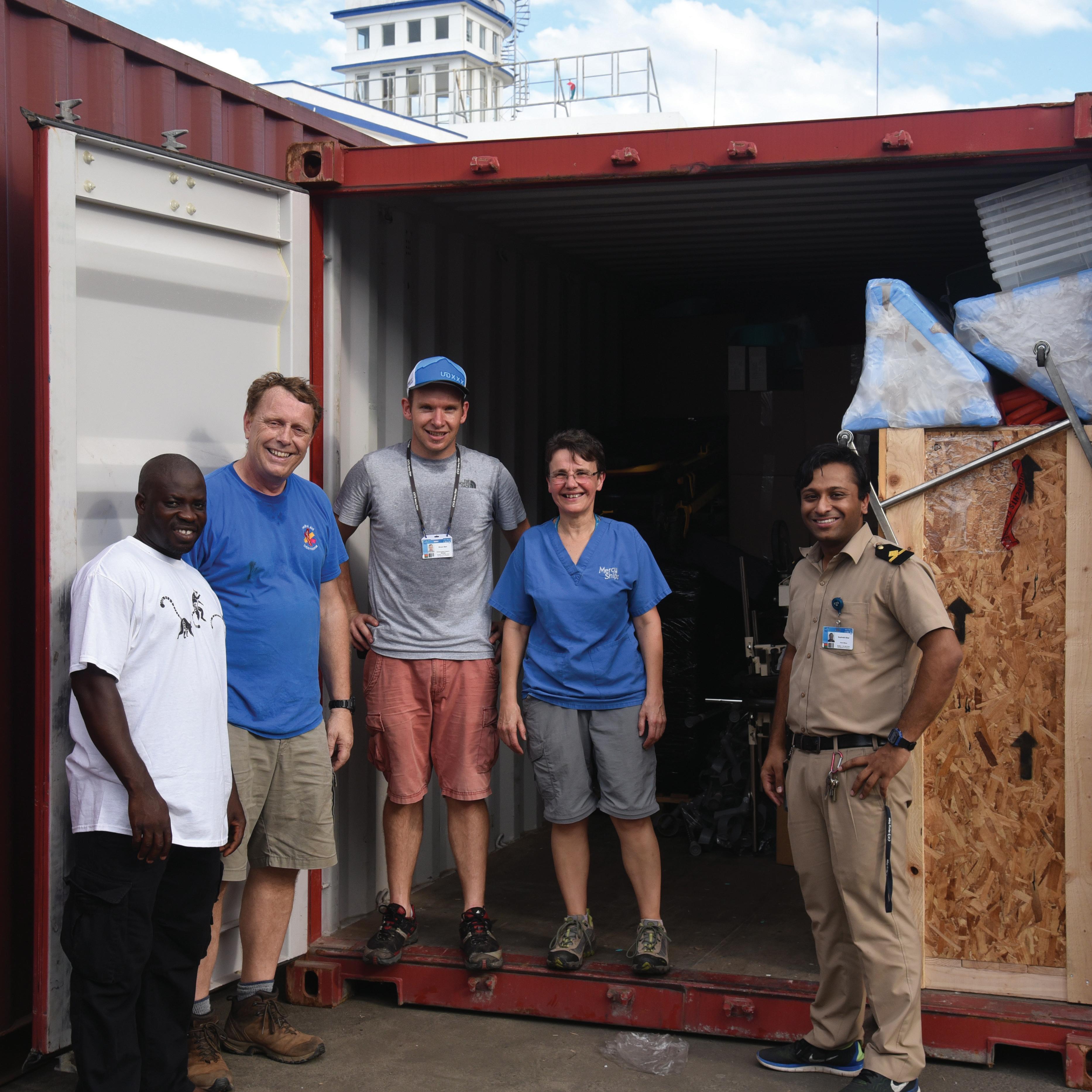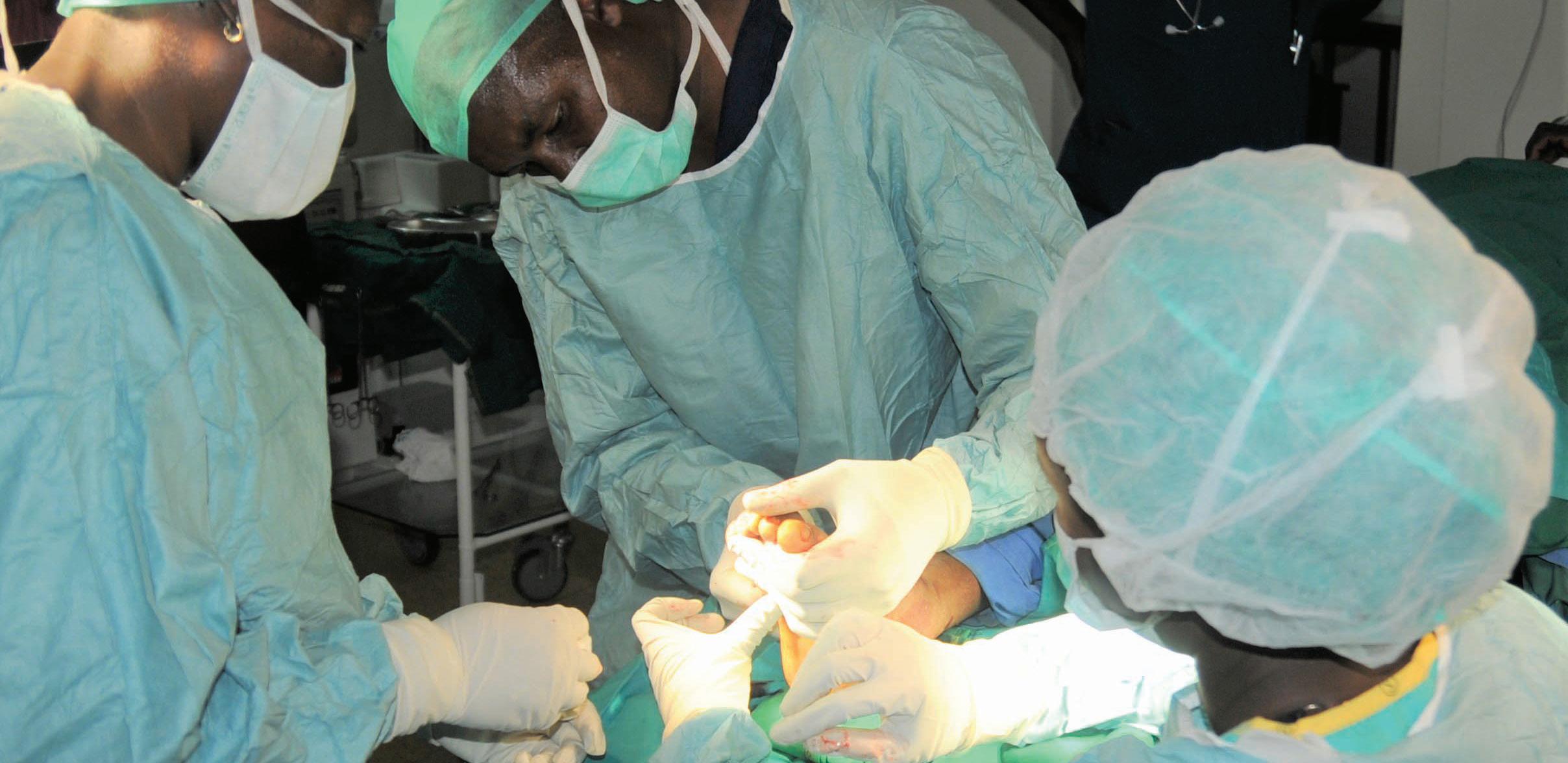
9 minute read
Introducing Orthopaedics International
INTRODUCING
Tim Beacon, CEO of Medical Aid International, spent many years in clinical orthopaedics, as well as working at national manager level in the orthopaedic device industry, supplying trauma and joint replacement systems. On many occasions in LMICs, he saw wards full of orthopaedics patients who could have been treated effectively if only the infrastructure to do so had existed – but it didn’t. This left him, just like the medical staff in the hospitals concerned, hugely sad and frustrated – and from this grew his vision of creating a dedicated division at Medical Aid International to address this shocking situation. We were therefore delighted at the end of 2020 to formally launch Orthopaedics International under the leadership of our Global Orthopaedics Director, Stuart Sheffield, who Tim knew well from his time in the orthopaedics device industry. As part of our work in this area, which includes training, we are delighted to partner with World Orthopaedic Concern UK – a charitable organisation dedicated to improving the standard of orthopaedic, trauma and reconstructive surgery in developing countries.
Advertisement
Orthopaedics International Solutions
Cost-effective treatment for a major cause of disability
In the West, fractures and orthopaedic trauma meet with effective treatment that delivers overwhelmingly positive patient outcomes. In LMIC regions, however, it’s a very different story – orthopaedic injury is a major cause of death, disability, unemployability, and therefore also poverty. The treatments that are available keep the patient immobile and confined to bed, in traction, unable to work, for many weeks, imposing an economic burden on the patients’ families, and increasing the likelihood of a variety of clinical complications due to the length of bed stay. Unlike many other specialities, orthopaedics requires significant instrumentation and implants in order to provide a life-changing solution, and in LMICs there is the added extensive requirement for joint replacements – particularly hips – due to complications arising from HIV.
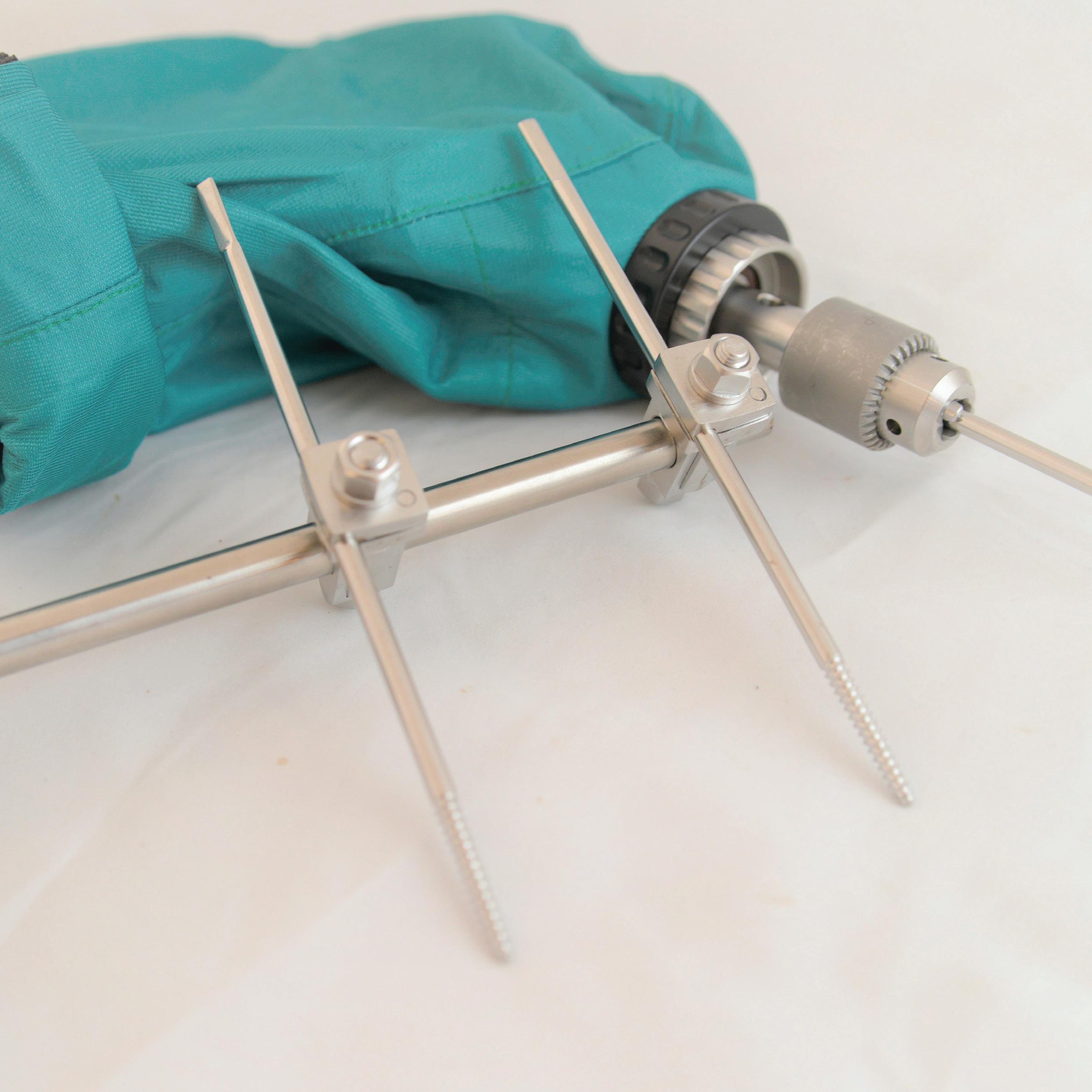
Orthopaedic Products supplied by Orthopaedics International
• External Fixation including Ilizarov frames • K-Wires • Rush Nails • Small and Large Fragment plates and screws • Intramedullary Nails
Orthopaedic External Fixation Pack
• Total Hip replacements (cemented and uncemented) • Total Knee replacements • Instrument sets and all accessories including consumables
Our 19 years of experience have shown that there are many levels of support we need to deliver. A large orthopaedic unit in a town, for example, will require more sophisticated treatment options, whereas remote rural clinics or hospitals – who are often the first to receive major bone trauma cases – require something much more user-friendly: an external fixation system, which stabilises the injury using pins and rods, permitting surgical access, delivering far better results, far more quickly. Unfortunately, the standard orthopaedic surgical power drill systems normally used are not only prohibitively expensive for less developed countries, but are also prone to breakdown, with little prospect of being subsequently returned to function. Medical Aid International’s Orthopaedic External Fixation (Orth Ex Fix) Pack turns this situation around. It is a comprehensive treatment set that delivers a complete, portable fracture solution that makes orthopaedic treatment both cost-effective and simple for clinicians to adopt, with minimal maintenance required. The Ortho Ex Fix Pack combines a battery powered drill – with a re-sterilisable, sealable bag that prevents infection, and a range of standard rods, clamps, pins, and drill bits. Orthopaedic nails, plates, screws and K-wires, and even complete hip and knee replacement sets are also available. The Ortho Ex Fix Pack is a critical innovation that not only greatly accelerates the return of function to the fractured body part, but speeds the return of the patient to a normal, economically active, selfsufficient life too.
www.orthopaedicsinternational.org
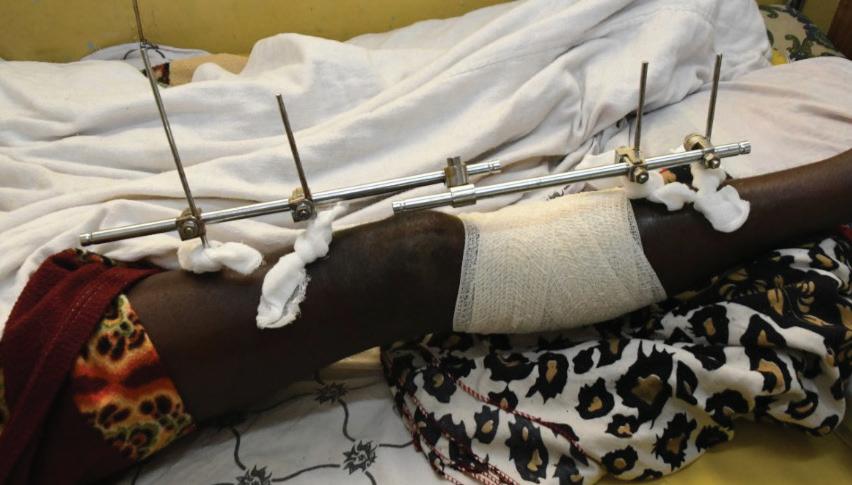
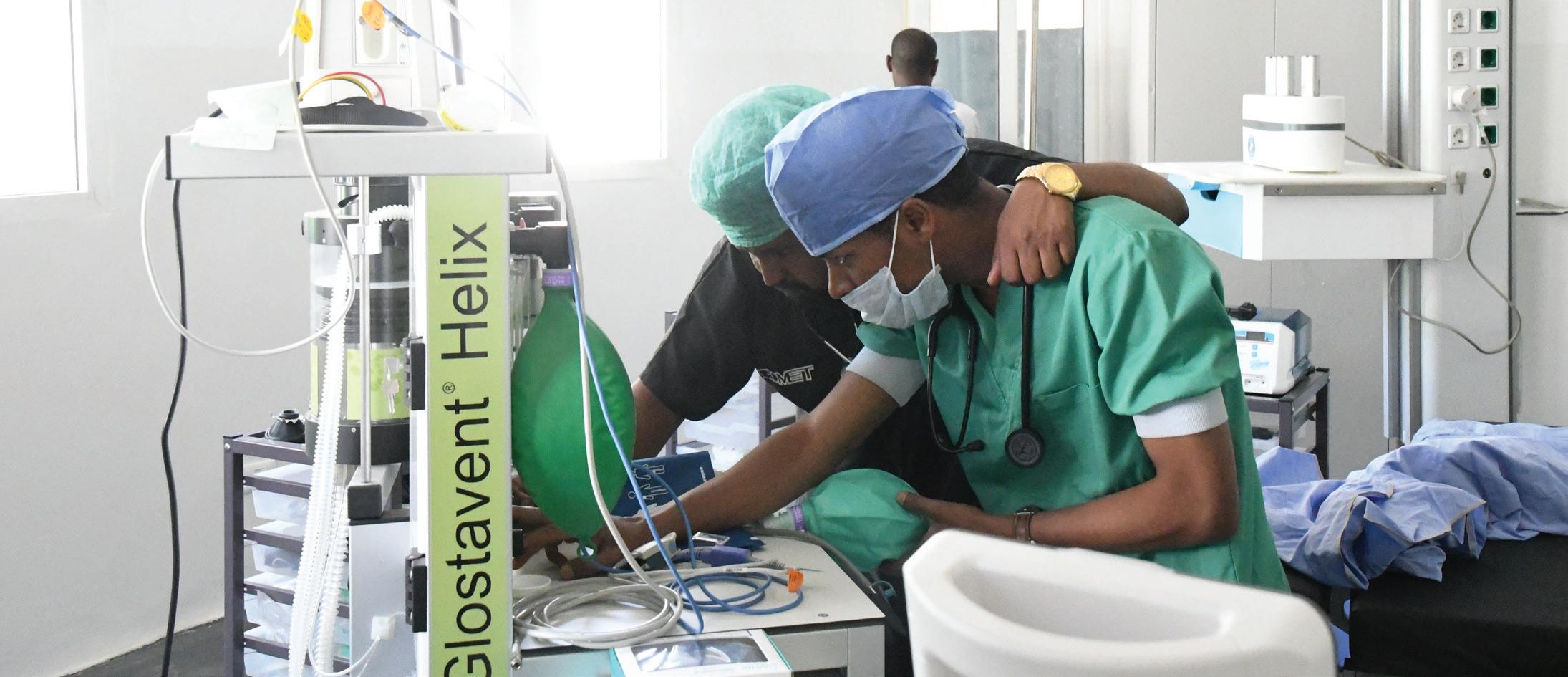
Anaesthetic Solutions
Indispensable equipment for LMIC operating teams
Anaesthesia in remote environments is rightly perceived as an area of great challenge, and it is true that it is a frequently high-risk procedure, given that the patients it is performed on in LMIC environments are often medically unfit, and a full preoperative assessment is not possible. Anaesthesia also suffers from hidden costs, as it requires not just an anaesthetic machine but associated complex and often expensive equipment, including laryngoscopes, equipment for difficult intubation, monitoring, and suction. But on top of this, LMIC regions bring many other challenges to the operating table. Power supply is often limited and / or intermittent, and piped or cylindered oxygen and other gases are often simply not available. Yet at Medical Aid International, we make it perfectly possible to administer reliable anaesthetics in these environments, and carry out surgery safely. Based on many years’ experience, we advise on and provide long-term anaesthetic solutions that are as effective high in the Himalayas or deep in the rural DRC as they are in a major teaching hospital in Dar es Salaam. How do we do this? By focusing on innovative but robustly simple technologies and approaches that are appropriate first and foremost for LMIC environments. Examples of typical solutions include draw-over, self-contained, and occasionally, in major centres, circle machines, and these are explained in more detail in the table opposite.
Table showing anaesthetic solution options
Anaesthetic solution Benefits
Draw-over system • Requires no electricity • Can be used for all age groups • Can have an external ventilator attached to it. • Small and portable • Generally the lowest-cost option • Maintenance-free Important to know
• Can be transported in luggage • Supplementary oxygen can be given • Supplied with a trolley to facilitate storage • Can be used on newborns
Self-contained system
Circle machine • Equipped with an Inbuilt ventilator, like a traditional anaesthetic machine • Needs no external gases, thanks to inbuilt oxygen concentrator • Can run without mains power for a limited period • Larger than draw-over machines, so there can be freight cost implications • Requires mains electricity the majority of the time • Can be connected to external gas supply, if available
• Used in major medical centres globally • Works with much lower flow rates of gas, as it recycles the patient’s gases • More advanced ventilator • Needs extensive stocks of soda lime to extract CO2 from patient’s gases • Requires regular servicing on a yearly basis, unlike the solutions above • Requires CO2 and anaesthetic agent monitoring • Most expensive anaesthetic option; rarely suitable for LMIC environments.
Patient monitoring: vital knowledge of vital signs
Patient monitoring equipment is critical in ensuring that anaesthetised patients remain stabilised throughout the operating procedure – and intervening effectively when they don’t. But monitoring functions can add huge costs to anaesthetic equipment – so all too often, LMIC hospitals and healthcare facilities go without. Crucially, at Medical Aid International, we supply monitoring solutions that have been conceived specifically to suit the demands of LMIC environments, and to deliver the same benefits as integrated anaesthetic / monitoring machines, but at far lower cost. For example, we can supply hand-held devices for oxygen saturation (SpO2) measurement and carbon dioxide monitoring (capnography), as well as blood pressure sphygmomanometers, facilitating monitoring processes affordably. Our monitoring solutions are also supplied with accessories to suit the wide patient age range of LMIC environments (from neonatal to adult), and can comprise cost-effective devices for ECG, anaesthetic agent monitoring, and suction, plus a full range of LED laryngoscopes with replacement parts. Wherever there’s an anaesthetic challenge in an LMIC environment, we have a context-appropriate response. Examples of the main parameters that must be considered when procuring patient monitoring equipment are shown in the table opposite.
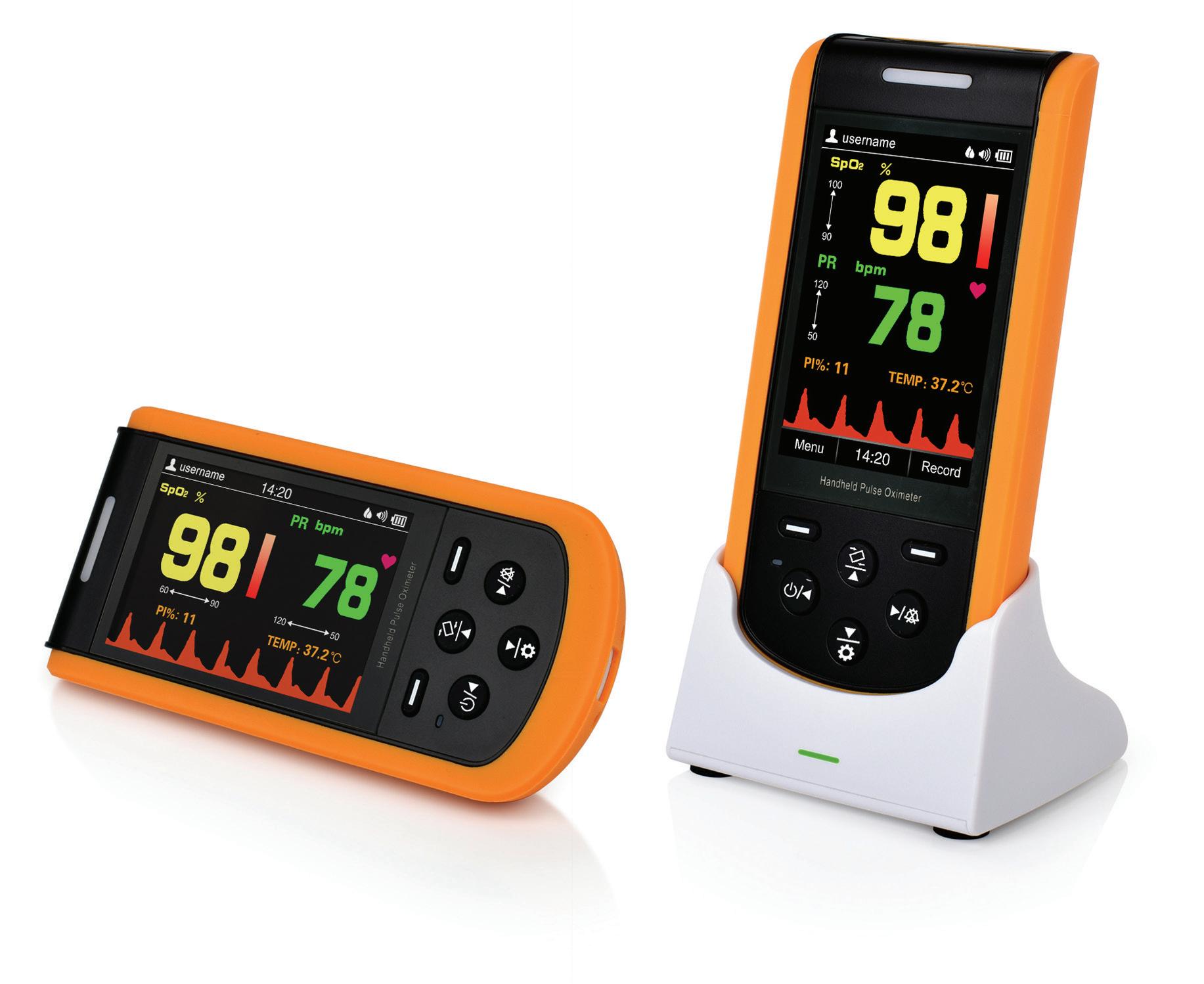
Table of key parameters in procurement of patient monitoring solutions
Parameter Considerations
Accessories
ECG • In many LMIC environments the availability of ECG electrodes is minimal or non-existent
• All monitors sent must cover the full patient age range • Two of each accessory should be sent to enable spares availability
Blood pressure
Oxygen saturation (SpO2)
Carbon Dioxide measuring (capnography)
Anaesthetic agent monitoring
Other requirements for safe anaesthesia • A vital parameter to be measured, particularly as many patients undergo spinal anaesthesia, which can significantly drop their blood pressure
• A vital parameter and an easy one to measure.
• A truly vital adjunct that many are, however, less familiar with • Essential for use with circle machines • Very desirable for all types of general anaesthetic
• As discussed above, in a closed system the anaesthetic agent levels should be monitored.
• To give safe anaesthesia, working suction is required • Laryngoscopes with a full range of blades should be supplied with a spare handle • Equipment for difficult intubation such as bougies and Magill forceps should also be supplied Important to know
• Age range must comprise neonatal, child, adult • Try to use the same brand of monitors throughout a facility so accessories can be shared
• Note the contrast with the West, where ECG is regarded as a standard monitoring procedure
• An electronic blood pressure device is preferable, but a basic sphygmomanometer can be used
• There are a multitude of LMIC-appropriate models available including finger models as well as larger handheld ones. • Gives an instantaneous read out as to whether a patient is breathing or not.
• Monitors with this facility are extremely expensive and this should be a consideration when budgeting for anaesthetic machines.
• Battery backup should always be available in case of a power failure

Fistula Surgery
Championing women’s health and wellbeing
A major consequence of poor medical equipment supply in LMIC regions is that obstetric care is often not carried out adequately. A knock-on effect of this tends to be a high incidents of prolonged obstructed labour, and this in turn can cause fistulas, whose symptoms include worsening incontinence – and can result in many women becoming socially excluded. At Medical Aid International, we are proud to help fistula sufferers recover from their pain and embarrassment not only by advising on, developing, and supplying LMIC-appropriate fistula repair equipment globally, but by partnering with influential organisations to actively advance women’s health and rights. Our operating table solution (see pg 15), which we designed and commissioned ourselves, has special head-down positioning and shoulder supports for safe and effective fistula surgery, and is easily transportable for fistula outreach clinics. We work closely with the International Federation of Gynaecology and Obstetrics / Fédération Internationale de Gynécologie et d’Obstétrique (FIGO), which is dedicated to the reduction of disparities in healthcare available to women and newborns, as well as to advancing the science and practice of obstetrics and gynaecology. Just one of the many positive outcomes of this relationship has been our development of a specialist fistula instrument set, which we have supplied to hospitals and healthcare facilities across many LMIC regions. Our work in rural clinics helps us to identify patients who are at risk of obstetric complications including fistula.

